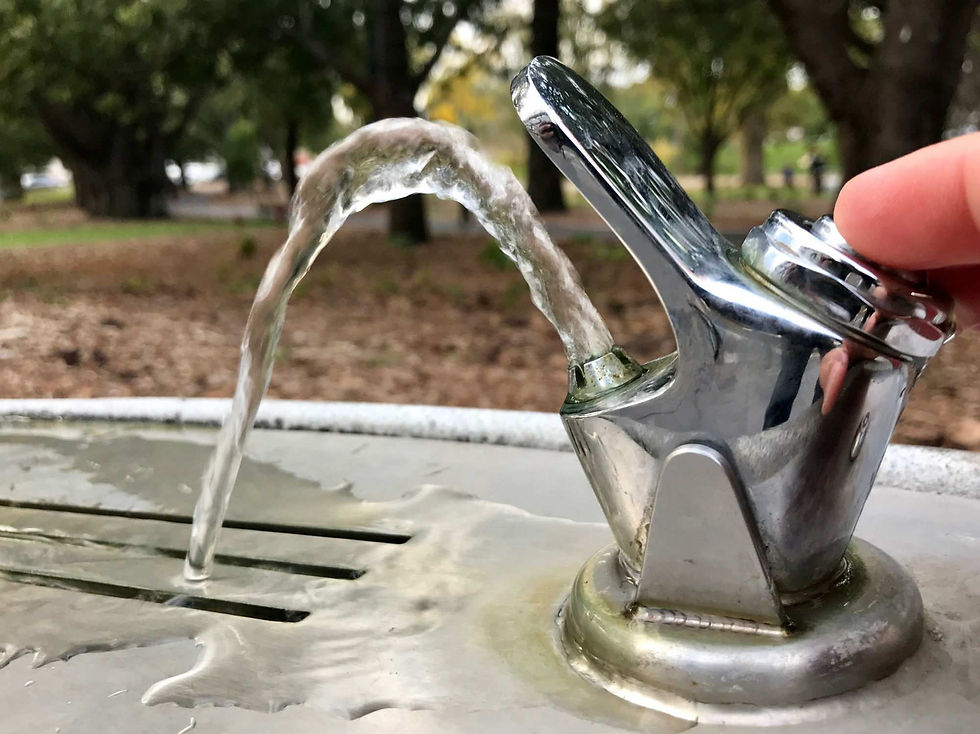Drinking water fountains are essential in public spaces, schools, gyms, offices, and parks, providing convenient access to clean hydration. However, regular maintenance is key to ensuring these fountains remain safe, functional, and hygienic. A well-maintained fountain not only enhances user experience but also extends the life of the unit and promotes public health.
Why Maintenance Matters
Without proper upkeep, drinking fountains can become a source of contamination or fail to operate efficiently. Common issues such as reduced water flow, unpleasant taste, or buildup of bacteria can occur when fountains are neglected.
Regular maintenance ensures:
Safe, clean drinking water
Optimal water pressure and flow
Extended equipment lifespan
ADA and hygiene compliance
A positive public image

Daily Maintenance Checklist
Daily maintenance is crucial for fountains in high-traffic areas. Here's what should be done each day:
1. Clean Surfaces
Wipe down all external surfaces with a non-toxic disinfectant to remove grime, germs, and fingerprints. Pay special attention to the spout and push buttons.
2. Check Water Flow
Test the water stream to ensure proper flow. It should arc smoothly and be easy to drink from without splashing.
3. Inspect for Leaks
Look for any signs of water pooling around the base or under the fountain. Leaks can cause slip hazards and indicate underlying plumbing issues.TO get more detail click official store
Weekly and Monthly Maintenance
While daily tasks keep the fountain clean, weekly and monthly inspections help prevent long-term problems.
1. Sanitize the Nozzle
At least once a week, sanitize the spout with a bleach solution or manufacturer-recommended disinfectant to kill bacteria.
2. Check the Filter
If your unit has a water filter, check it monthly to ensure it’s still effective. Replace it according to the manufacturer’s guidelines or when the taste/odor of water changes.
3. Test Temperature (If Refrigerated)
For fountains with cooling units, verify the water is being chilled properly. Inconsistent temperature may signal the need for repair or servicing.
4. Flush the System
Flush the fountain regularly, especially after long periods of disuse. This clears out stagnant water and ensures a fresh supply.
Seasonal Maintenance
Outdoor fountains and those in climate-sensitive environments require special attention during seasonal transitions.
1. Winterization
In cold climates, turn off and drain outdoor fountains before freezing temperatures to prevent pipe and component damage.
2. Spring Re-activation
Before restarting, thoroughly clean, inspect, and test all components. Reconnect the water supply and flush the system thoroughly.
Signs Your Fountain Needs Repair
Even with regular care, wear and tear can lead to the need for repairs. Watch out for:
Unusual noises or vibrations
Poor water flow or no flow at all
Water that tastes or smells off
Inconsistent temperature (for cooled models)
Physical damage or rust
Promptly addressing these issues can prevent bigger problems and costly downtime.
Pro Tips for Long-Term Maintenance
Use only manufacturer-approved parts when replacing filters or components.
Keep a maintenance log to track servicing, filter changes, and repairs.
Train maintenance staff on proper procedures for your specific fountain model.
Install smart monitoring systems if available, which can alert you to maintenance needs in real-time.
Conclusion
Maintaining a drinking water fountain is not just about cleanliness—it’s about safety, reliability, and user satisfaction. By sticking to a regular maintenance routine, facility managers can ensure fountains provide fresh, clean water every day. Whether your fountain is indoors or outdoors, touchless or traditional, regular care is the key to long-lasting performance.
Comments